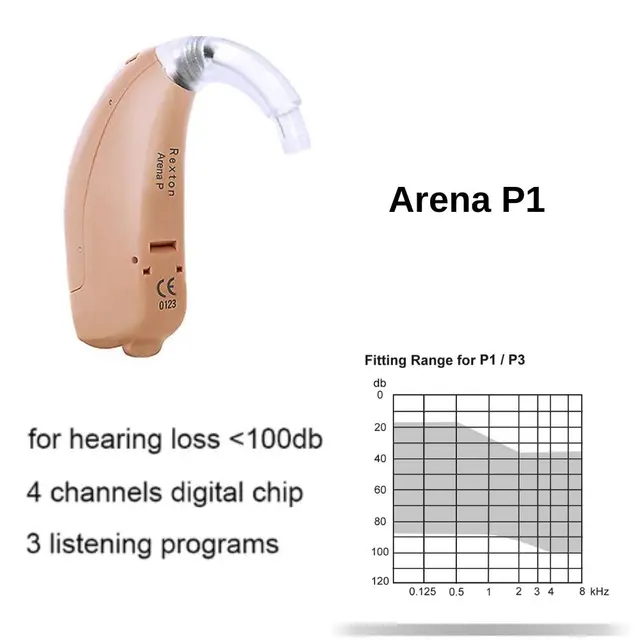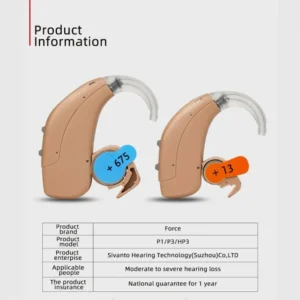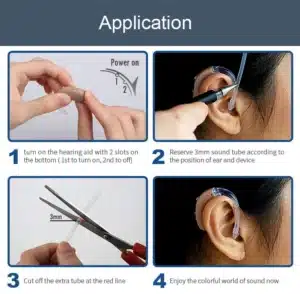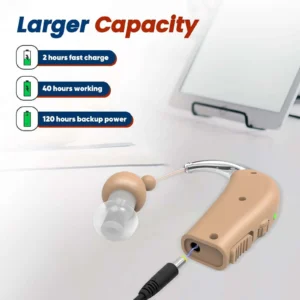
Earplugs are handy devices designed to block out or reduce unwanted noise. They come in various shapes, sizes, and materials, catering to different preferences and needs. Whether you’re trying to sleep in a noisy environment, concentrate in a bustling office, or protect your ears during loud events like concerts, ear-plugs can be quite useful.
Foam ear-plugs are a popular choice due to their affordability and effectiveness in blocking out noise. They work by expanding in the ear canal, forming a snug fit that blocks out sound. However, some people find them uncomfortable for long-term wear.
Silicone or wax ear-plugs offer a more customizable fit, molding to the shape of your ear canal. They’re often reusable and can provide a better seal against noise.
For musicians or concert-goers, specialized high-fidelity ear-plugs are available. These reduce noise levels without distorting the sound, allowing you to enjoy the music while protecting your hearing.
No matter which type you choose, it’s important to use ear-plugs properly to avoid damaging your ears or causing discomfort. Make sure to clean reusable ear-plugs regularly and replace disposable ones as needed. And if you’re unsure about which type is best for you, consulting with an audiologist can provide valuable guidance.

Here are several types of ear-plugs commonly available:
1. **Foam Ear-plugs**: These are probably the most common type. They’re made of soft foam that compresses easily for insertion into the ear canal, then expands to form a snug seal. Foam ear-plugs are inexpensive and disposable, but they might not be as durable or effective for long-term use.
2. **Silicone Ear-plugs**: These ear-plugs are typically made of a moldable silicone material that conforms to the shape of your ear canal. They’re reusable and often more comfortable than foam ear-plugs for extended wear. Silicone ear-plugs come in various shapes and sizes to fit different ear shapes.
3. **Wax Ear-plugs**: Wax ear-plugs are made from a blend of wax and cotton fibers. Like silicone ear-plugs, they are moldable and conform to the shape of your ear canal. They’re generally hypoallergenic and comfortable for many users. However, they’re not as widely available as foam or silicone ear-plugs.
4. **Custom Molded Ear-plugs**: These ear-plugs are custom-made to fit your ear canal precisely. They’re often made by taking an impression of your ear, which is then used to create a personalized ear-plug. Custom molded ear-plugs provide an excellent fit and superior noise reduction but can be more expensive than other types.
5. **High-Fidelity Ear-plugs**: These ear-plugs are designed for musicians, concert-goers, or anyone who wants to protect their hearing without sacrificing sound quality. They reduce noise levels evenly across frequencies, preserving the clarity of music or speech while lowering the volume. High-fidelity ear-plugs often come with interchangeable filters to adjust the level of noise reduction.
6. **Swimming Ear-plugs**: These ear-plugs are specifically designed to keep water out of the ears while swimming or bathing. They’re typically made of waterproof materials like silicone or rubber and often have a specialized design to create a watertight seal.
7. **Noise-Canceling Ear-plugs**: These ear-plugs use active noise-canceling technology to reduce unwanted ambient noise. They typically include electronic components that pick up external sounds and produce anti-noise signals to cancel them out. Noise-canceling ear-plugs are often used in noisy environments like construction sites or airplane cabins.
Each type of ear-plug has its advantages and disadvantages, so it’s essential to consider factors like comfort, effectiveness, durability, and intended use when choosing the right one for you.

Ear plugs are generally safe for most people and can be quite beneficial in protecting your ears from loud noises or preventing water from entering the ear canal. However, improper use or frequent use can lead to some issues:
To avoid these issues, make sure to clean reusable ear plugs regularly, use them as directed, and take breaks from using them to let your ears breathe.
Wearing ear-plugs properly does not typically damage your ears. In fact, they can protect your hearing from loud noises and reduce the risk of ear infections by keeping out contaminants and excess moisture. However, improper use or certain factors can potentially cause problems:
To minimize risks, ensure ear-plugs are clean, use the correct type and size for your ears, and follow usage guidelines.
Earplugs are manufactured using various processes depending on the type of material and design. Here’s a general overview of how foam earplugs, one of the most common types, are made:
1. Material Preparation: The primary material used in foam ear-plugs is a soft, flexible foam, usually polyurethane foam. This foam is supplied in large blocks or sheets.
2. Mixing and Formulation: The foam material may undergo a mixing process where additives and colorants are incorporated to achieve desired characteristics such as density, texture, and color.
3. Molding: The foam material is then fed into a molding machine. Molding can be done using injection molding or compression molding techniques. In injection molding, the foam material is heated and injected into a mold cavity under high pressure, where it expands to fill the mold’s shape. Compression molding involves compressing the foam material into a mold cavity using heat and pressure.
4. Curing: After molding, the foam ear-plugs are allowed to cure or cool down to set their shape and structure. This step ensures that the ear-plugs maintain their desired form and properties.
Click here for New Types of Ear Plugs
5. Trimming and Finishing: Once cured, the ear-plugs may undergo trimming to remove any excess material or imperfections. They may also undergo additional finishing processes such as surface smoothing or coating application for added comfort or functionality.
6. Packaging: The finished ear-plugs are then packaged into individual pairs or sets. Packaging may include inserting the ear-plugs into plastic bags, blister packs, or other containers, along with instructions and other relevant information.
For other types of ear-plugs like silicone, wax, or custom-molded ear-plugs, the manufacturing process may differ. Silicone and wax ear-plugs, for example, may involve molding or shaping the material by hand or using specialized equipment. Custom-molded ear-plugs require taking impressions of the user’s ears and then using those impressions to create personalized ear plugs.
Overall, the manufacturing process for ear-plugs involves a combination of material preparation, molding or shaping, curing, finishing, and packaging to produce the final product.

The materials used for making ear-plugs vary depending on the type of ear-plug and its intended purpose. Here are some common materials used in ear-plug manufacturing:
1. **Foam**: Foam ear-plugs are typically made from polyurethane foam. This material is soft, lightweight, and flexible, allowing the ear-plug to compress for easy insertion into the ear canal and expand to form a snug seal.
2. **Silicone**: Silicone ear-plugs are made from a moldable silicone material. Silicone is hypoallergenic, durable, and waterproof, making it suitable for reusable ear-plugs. Silicone ear-plugs are often preferred for their comfort and customizable fit.
3. **Wax**: Wax earplugs are made from a blend of wax and cotton fibers. The wax is often a mixture of paraffin wax and beeswax. Wax ear-plugs are moldable and conform to the shape of the ear canal, providing a comfortable and effective seal against noise and water.
4. **Rubber**: Rubber ear-plugs are made from synthetic rubber materials such as latex or thermoplastic elastomers (TPE). Rubber ear-plugs are flexible, durable, and often used for specialized applications like swimming or industrial noise protection.
5. **Custom Molded Materials**: Custom molded earplugs are made from a variety of materials, including silicone, acrylic, or vinyl. These materials are used to create personalized ear-plugs that fit the unique shape of the wearer’s ear canal.
6. **Filters and Membranes**: Some ear-plugs, particularly high-fidelity or noise-canceling ear-plugs, contain filters or membranes made from materials like plastic or metal. These components help to attenuate noise while allowing the passage of sound frequencies, preserving the clarity of speech or music.
7. **Foam Coatings**: Foam ear-plugs may be coated with materials like polyvinyl chloride (PVC) or polyethylene for added durability, moisture resistance, or comfort.
The choice of material depends on factors such as comfort, effectiveness, durability, and intended use. Manufacturers may also incorporate additional features or treatments into ear-plugs to enhance their performance or user experience.
An ear plug case is a small container designed to keep ear-plugs clean, safe, and readily accessible. Here’s a look at why you might need one and how to choose the right one:
Using a case for your ear plugs helps maintain their quality and ensures they are always ready for use, contributing to better hearing protection and comfort.
A radio earpiece is a type of communication device commonly used for hands-free communication in various settings, such as security, event management, and emergency services. Here’s a quick rundown of what you should know about radio earpieces:
If you use a radio earpiece frequently and experience any discomfort or hearing issues, it’s a good idea to consult with a healthcare professional to ensure that your ears remain healthy.
Custom ear plugs are personalized devices designed to fit the unique shape of your ear canal. They provide a more comfortable fit and better protection compared to generic ear plugs. Here’s what you need to know about them:
Custom ear-plugs can significantly enhance comfort and effectiveness, especially for those who need specialized hearing protection or experience discomfort with generic ear-plugs.

To get custom ear plugs made, follow these steps:
By seeking advice from a knowledgeable professional and opting for a reliable provider, you can secure high-quality custom ear-plugs that are specifically tailored to your unique needs
How to Manage Tinnitus at Home: If tinnitus is mostly noticed in quiet situations, first you should try using a white noise machine to mask the noise. If you don’t have a white noise machine, a fan, soft music or low-volumed static radio will help.




How do you deal with tinnitus? If tinnitus is mostly noticeable in quiet situations, try using a white noise machine to mask the noise from tinnitus. If you don’t have a white noise machine, a fan, soft music or low-volume radio static also may help.